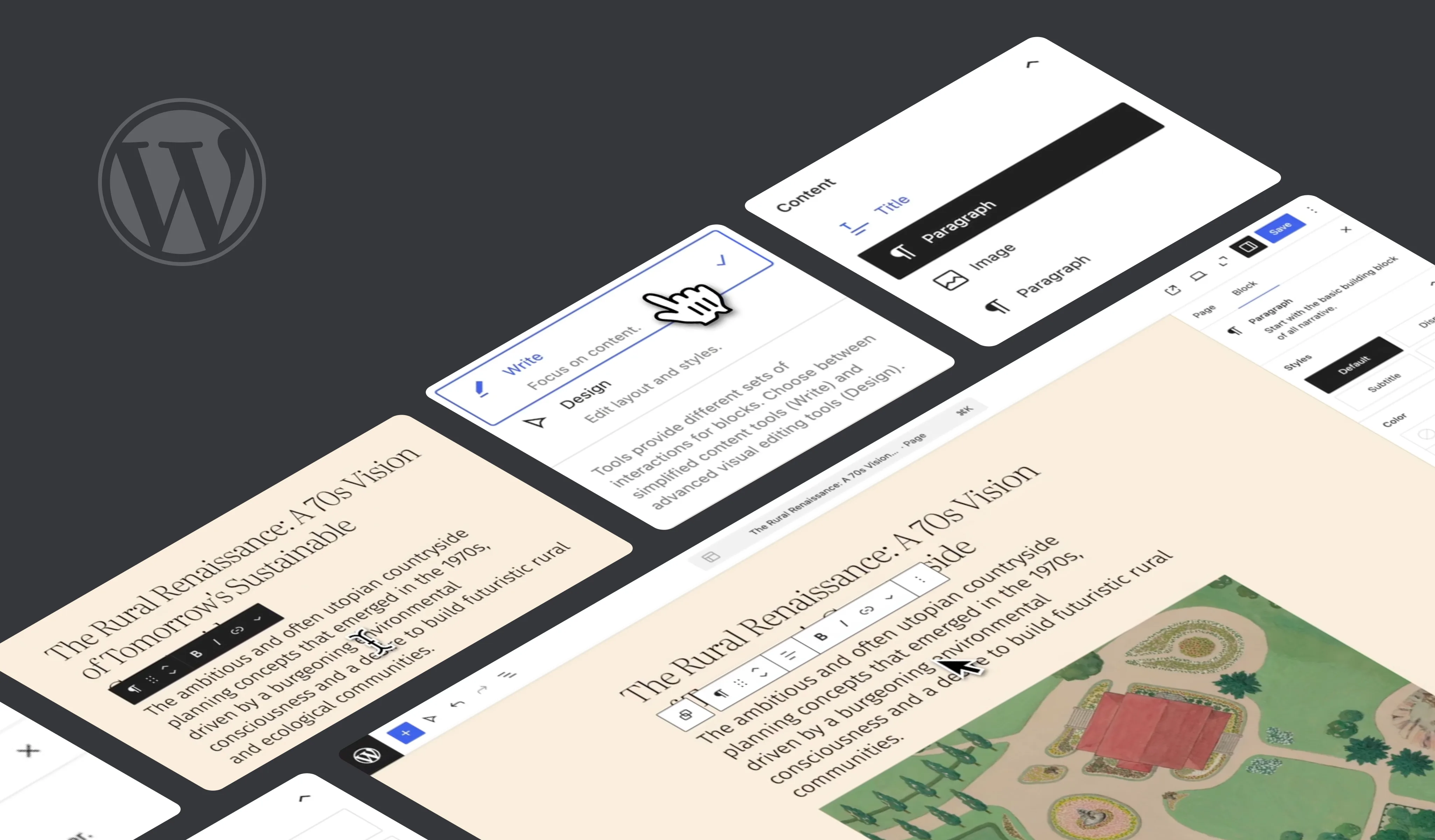At some point, companies that have their website decide to make an upgrade, redesign it or simply move to another CMS. For some companies with a large amount of content on their website, just thinking about it may give top managers grey hair. Nowadays, companies, especially big enterprises, continuously generate a lot of content. Many companies still use obsolete platforms and content management systems(CMS), frequently even custom-built to store the content.
So thinking about mitigating to another CMS is always a fear that some valuable information might get lost or corrupted during the transition.
The good news is that moving legacy websites to new platforms isn’t always as bumpy and risky as it may seem. The migration can be simple and safe if everything is accomplished correctly — with the proper procedures and expertise.
This article will explain what website migration involves and why it is worth the effort. We’ll also discuss why you need migration and how to prepare for it. We will talk about migrating website content since 90% of websites consist of content. And content, along with some features, is the most valuable thing on the website.
What is legacy website migration?
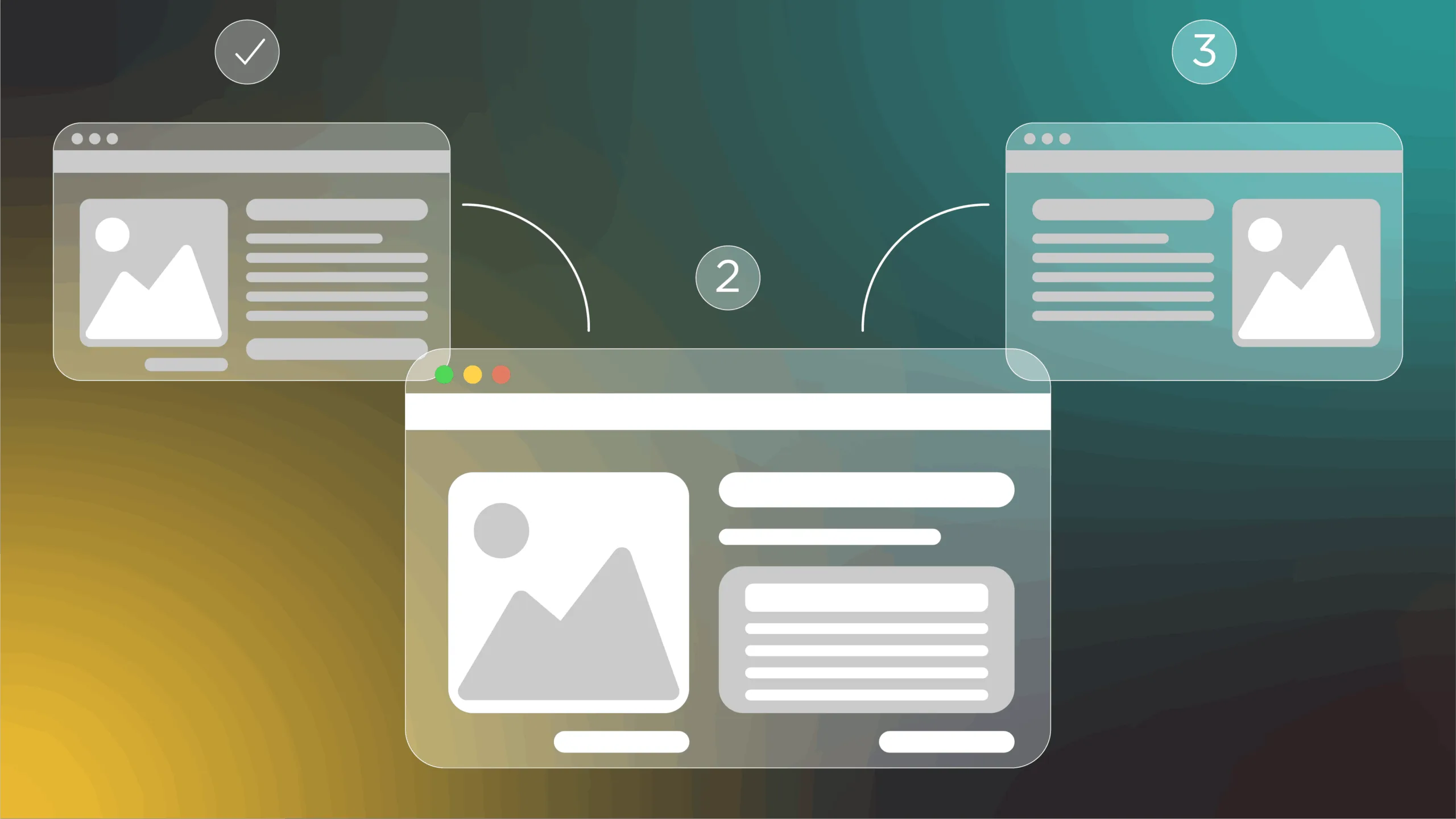
Legacy website migration is the process of moving content and functionality from an old or outdated platform/CMS to a new and modern platform with better capabilities. But let’s take a closer look:
- Legacy website. The term “legacy website” usually means that the website still uses frameworks and/or techniques that have been superseded by newer code and methods in modern sites. They are not supported and frequently not secure anymore. Besides using outdated and insecure code under the hood, website content is often poorly structured, and it has out-of-date formats with many limitations. However, it does not mean the content is useless. On the contrary, it’s vital for a business and, thus, worth storing.
- Obsolete environment. In the context of the legacy website, this is software used to host the website and make it publicly available. It is no longer supported, is not secure, and requires extra effort to maintain. Most often, it’s because this environment relies on technologies that are past their prime or third-party IT infrastructures that a vendor has ceased to support.
- An up-to-date environment. This environment represents an advanced modern system that meets the growing needs of today’s businesses, leverages the latest versions of the software, well supported and regularly maintained.
Depending on the business case, a legacy website content migration process can include updating infrastructure, changing CMS, updating/changing content structure, content conversion, or content integration. Content conversion happens when the original content is translated into a different format, while content integration means that the data from different sources are combined into a single storage.
Many legacy websites still operate and are in use, so most likely, you may ask, would it just be easier to keep it using? The short answer is no. But let’s discuss this in more detail.
Why do you need a legacy website migration?
Usually, the question of moving a legacy website to a new platform arises when an organization sets a new goal that can not be achieved with the existing website when the website has limited capabilities and does not support the features you need. If you decide to migrate you can expect the following benefits:
Cost optimization
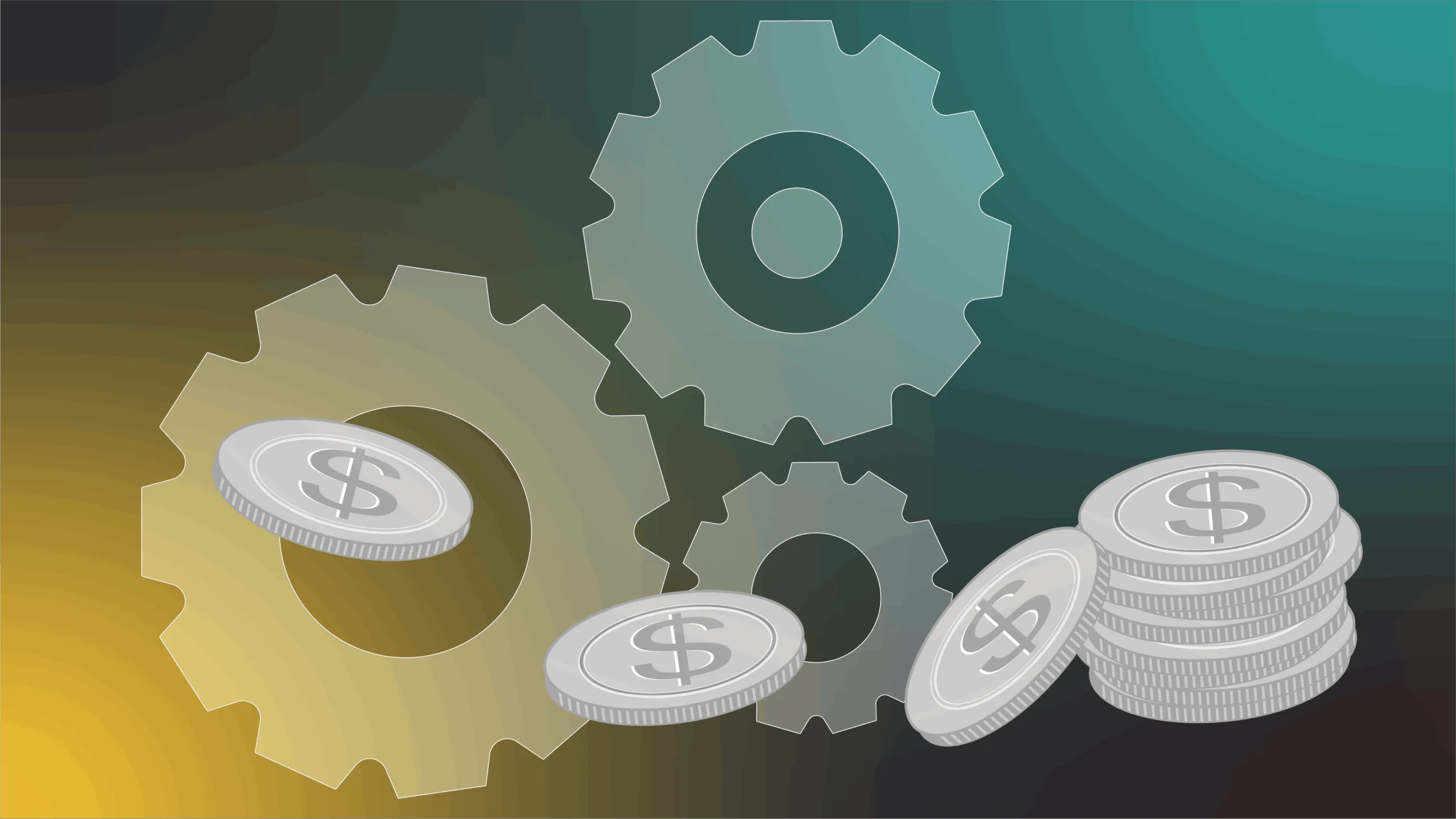
aintaining outdated platforms that store data is both difficult and costly. Often websites are hosted on servers provided by hosting companies, which regularly update infrastructure and software so that the website can be broken after such upgrades. Maintaining your servers with obsolete software requires a lot of resources and effort to keep them running, not to mention scaling up. Also, such an approach significantly increases the risk of being hacked. Why is that the case? The common reasons include the following:
- Restricted capabilities. Even if a legacy website is up and running, it’ll never offer the same capabilities as modern software. It may not support mobile/tablet resolutions or adding videos to pages, or some integrations won’t be possible.
- Security. Outdated software may contain security holes that may lead to hacking websites. It will be good if hackers just break the website (the website can be restored from backup), while it will be much worse when the personal data of all users is stolen.
- Frequent failures. Software becomes more and more cumbersome and prone to crashes over time.
- Shortage of professionals. When the technology is out-of-date, and nobody uses it in modern solutions, finding a developer who knows how to work with it is hard.
To summarize, migrating legacy websites to a new environment is critical if you don’t want to be burdened with high and unnecessary costs. Such a transition will require some initial investment, but long term, it will pay off.
Content marketing strategy
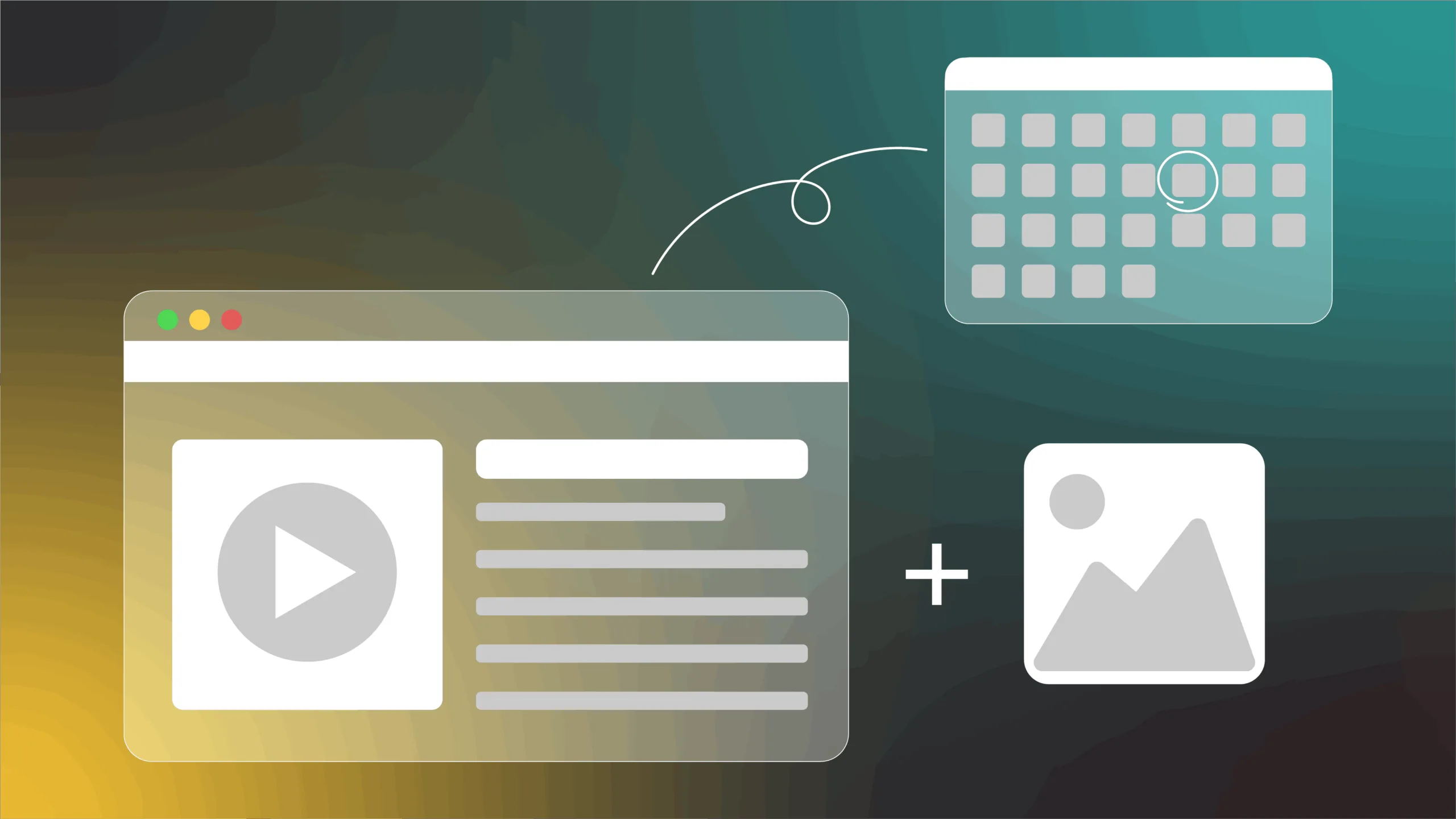
Another reason to migrate from a legacy website to a new platform/CMS is an improved quality of a content structure and better storytelling capabilities. As mentioned, the content is usually stored in out-of-date formats with a lot of limitations. Besides this, it’s often siloed, inconsistent, and overflowing with redundancies, pages may contain duplicated content. Combine that with the restricted capabilities of an old platform, and you’ll end up with large amounts of accumulated content that your business cannot use to the fullest.
A fastly growing number of mobile/tablet users also requires adjusting the content of the website for such devices, making images smaller, replacing some blocks with another and so on.
According to the research, data-driven businesses outperform their competitors in various areas, such as increased revenue, customer experience, product improvement, and cost reduction. Data is the marketer’s best friend. It gives you the capabilities to target campaigns to segmented audiences, create content based on what we know consumers love, and build messages that we know will engage. The content marketing strategy may require capabilities that are not available on the legacy website.
Accessibility and SEO improvements

Accessibility means that all people can perceive, understand, navigate, and interact with the website and be active, contributing members of the digital world. Visual, auditory, physical, speech, cognitive, and neurological disabilities should be considered when implementing accessibility measures.
There are at least four primary reasons why accessibility is important and should matter to us:
- It’s the law. Many federal and state laws require many organizations to make their electronic and web content accessible to people with disabilities.
- It promotes usability. When we consider accessibility in our online content design, it also enhances usability. It often results in a more intuitive user experience.
- It’s the right thing to do. Accessibility allows people with disabilities to participate actively in our society.
- It’s inclusive and provides equal access to everyone, especially people with disabilities.
Another thing is SEO. Migration content to a new platform is an excellent possibility to reimagine SEO strategy and improve it in the new platform, improving SEO by adding new tags and integrations.
Improved content quality
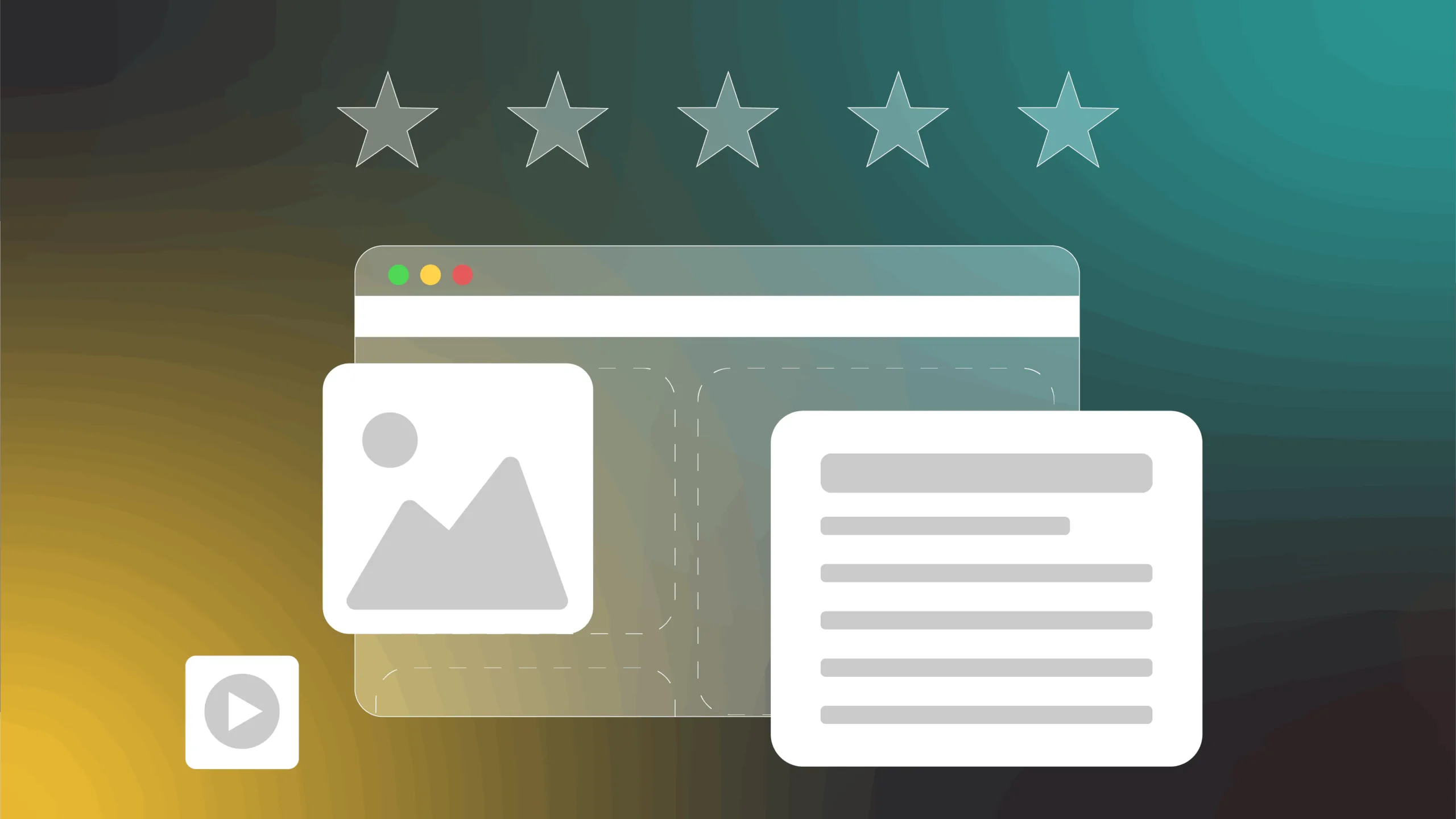
Some marketing managers hesitate to migrate from a legacy website to a new platform/CMS because of the fear that the data may become corrupted or even lost during the transition. No one wants to put at risk the accuracy of the information that has been accumulated over a long time. But this concern has nothing to do with how everything happens in practice. In our practice, migration content allows us to reimagine which content is worth migrating and which is not, which is well performed in terms of SEO and which is not. During planning migration, there is a chance to improve the quality of the content you have. Sometimes a monolithic page can be split out during the migration to separate blocks that allow reusing the same information from one page, in other places on the website, without duplicating content.
Limited capabilities
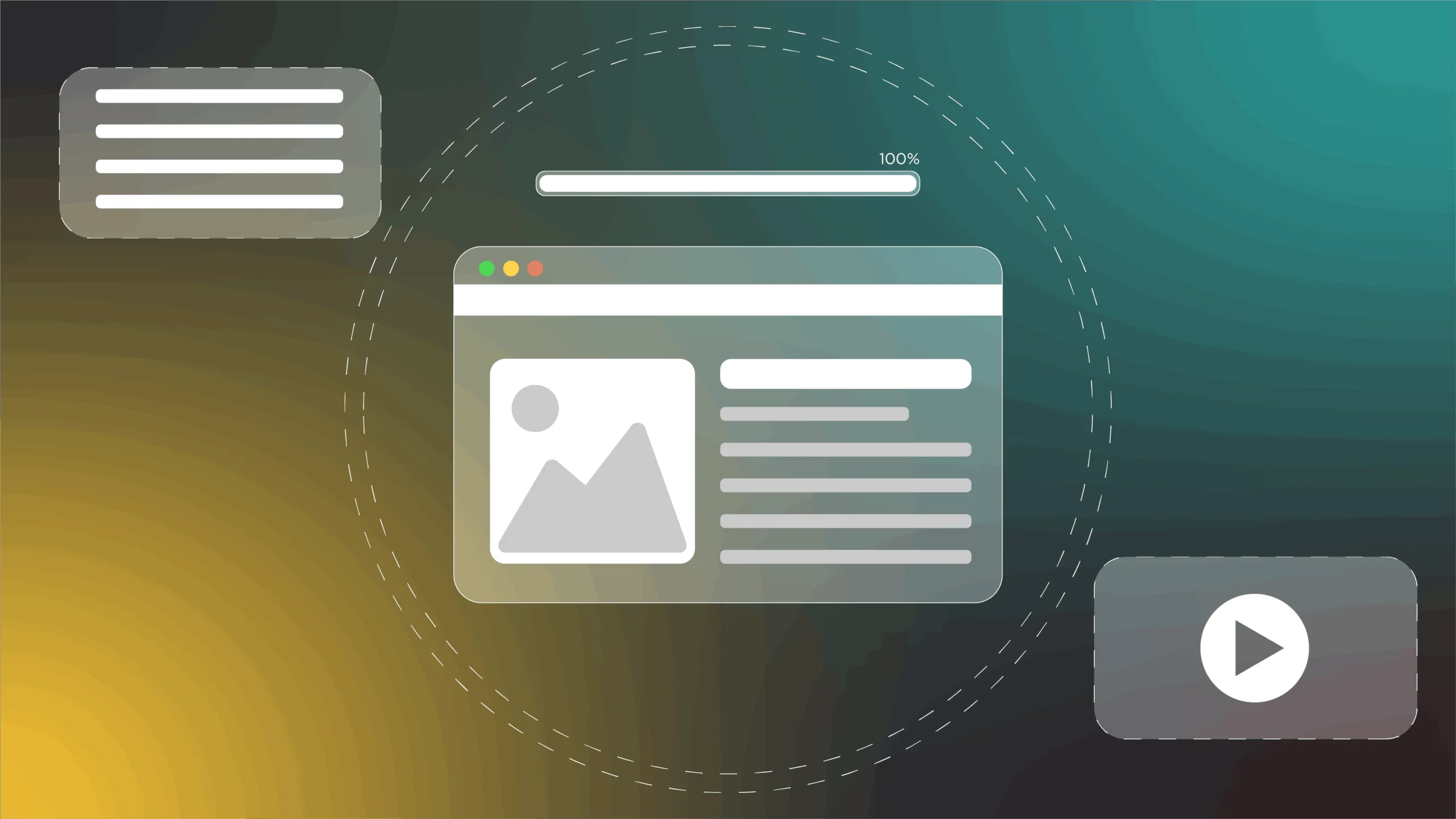
Today’s businesses expand their digital presence and grow their IT assets over time. One of the main problems with outdated platforms/CMSs is that they become unsupported. Extending and adding needed functionality become challenging and cost-effective. As a result, a website that was supposed to help a company reach its objectives complicates or even hinders its business development.
How to prepare for the legacy website migration?
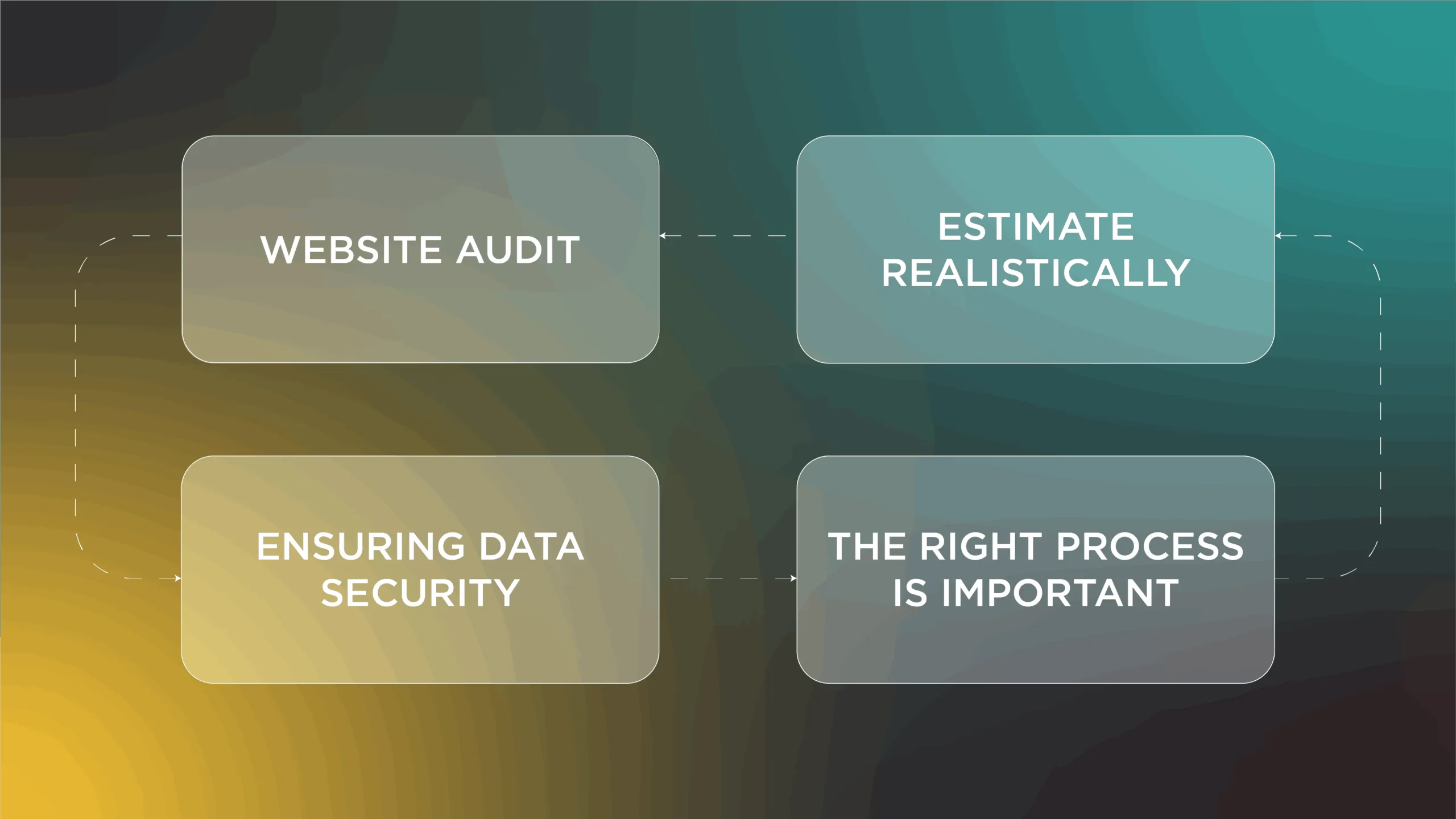
Legacy website migration is complex, so you should prepare for it in advance. Below is a list of requirements you must consider before proceeding.
- Website audit. This preliminary step is crucial since it’ll help you identify your website's most essential features, analyze content, identify pages your business no longer needs, and delete them before the migration. Also, an audit will help identify things your website misses.
- Ensuring data security. Meeting this requirement is paramount if you want to avoid data leaks and cyber attacks when migrating to a new environment. Ensure the team working on the migration project and the tools they use apply data security best practices.
- Estimate realistically. Content migration cannot be carried out in a few hours by just copying data sets from one storage and pasting them into the new storage. It is a lengthy process that requires time, money, and effort. So before starting, put enough resources into thoughtful planning.
- The right process is important. It’s important to take care of all the administrative aspects of legacy website migration beforehand. Ensure the team has all the necessary tools and understands their actions and why. Identify who will lead the migration and who will communicate with the developers.
The preparation will take some time, but it’s worth it. Skipping any of these requirements may cause unexpected problems during the process of migration. Please do not ignore it.
How the process of migration looks like
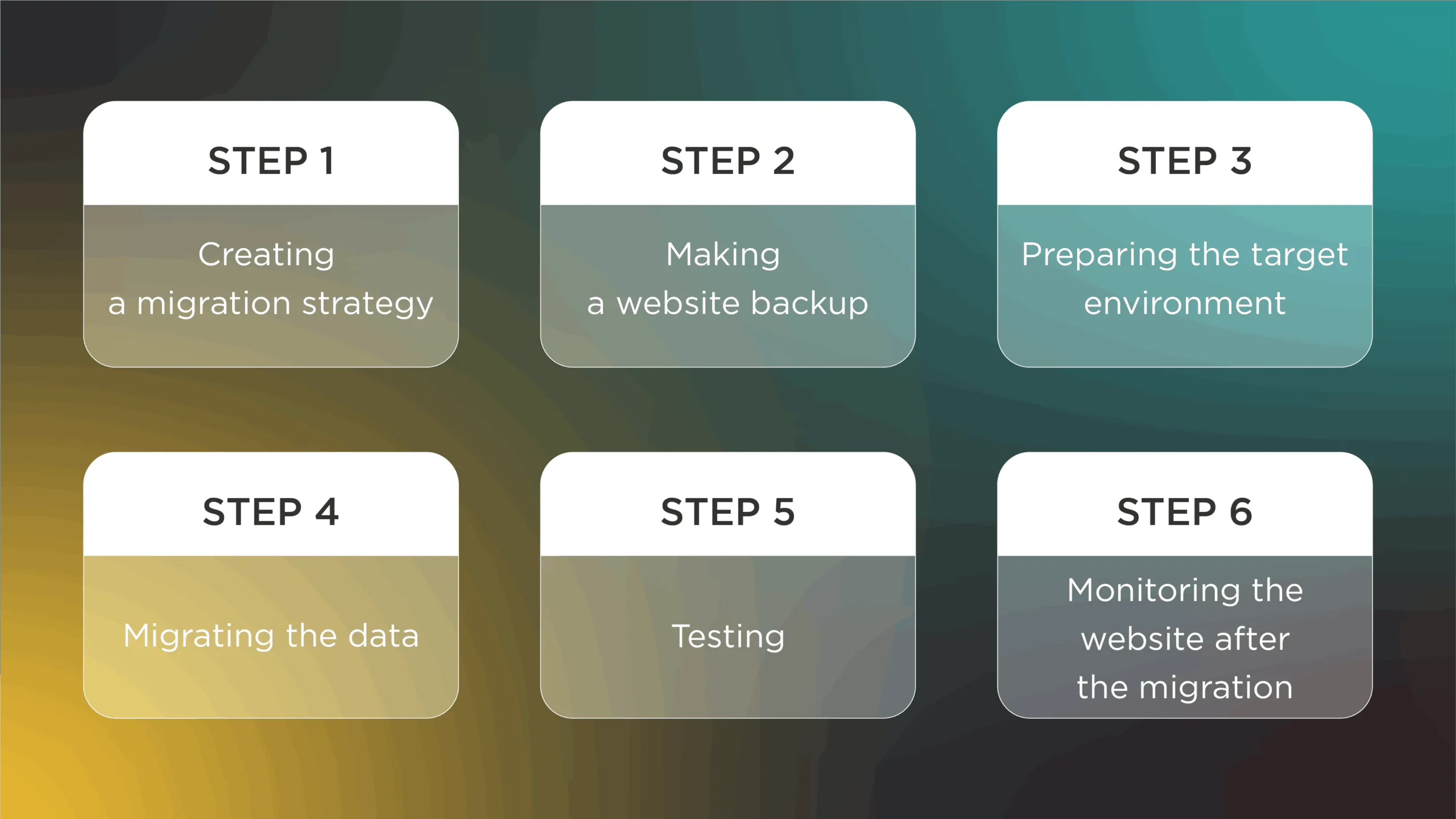
The process of legacy website migration can differ slightly depending on some factors: the team’s approach, the amount of content and features to be transferred, the timeline, etc. But the stages below are the common core for most website migration projects.
Step 1. Creating a migration strategy
Website migration should be a separate project, even if it’s part of a more global business initiative (e.g., a new company marketing strategy). That’s why you need to create a strategy specifically for it before taking any practical steps. Here is a list of crucial things to include in this strategy:
- Scope of your project. This should be a well-prepared overview of what should be done, what features should be added/removed, what content should be migrated, and what business processes will be affected.
- Migration approach. You’ll either migrate content as is or modify and rebuild it during migration. Everything depends on the specifics of your business case, timeline, and technical requirements.
- Important aspects. Include any important aspect of your project to meet the final goal.
Step 2. Making a website backup
Making a copy of the website and its database ensures that you can restore the original website if some mid-migration issues occur. Ignoring this stage may result in lost data. It's better to be prepared to roll back and restore the original website and to be on the safe side.
Step 3. Preparing the target environment
Before moving website content to a new environment, you should prepare this environment for migration. The specific aspects of this process will depend on the type of migration you choose. It can be a migration to an entirely new platform/CMS or a newer version of the same platform/CMS. But, in general, you have to ensure that a target environment is up, running, and ready to receive your content.
Also Read
Time to migrate your BigTree websitesStep 4. Migrating the data
It is the heart of the entire process. Once the environment is ready, and the website contains a new content type structure, you can perform a migration. There are three types of migration:
- Manual. Migrating content manually to a new structure and publishing pages once they are ready. This approach is good when
- you have a small amount of content;
- you want to rewrite it during migration;
- you have no budget to automate the migration.
- Semi-Manually. This approach means you will migrate part of the content manually, rewriting it on the way, and some content will be migrated as is automatic. Such an approach works well when you need to rewrite content for some landing pages, however, migrate, for instance, all blog posts as is.
- Automated. Automated migration is the most complex and time-consuming, but it works well when you have to migrate thousands of pages, so migrating it manually will take more time than developing automated migration. The good thing is that you can specify requirements on what to do with the content during automated migration. It can be split into separate fields or modified on the fly.
This phase requires planning a content freeze time, so you can avoid running migration several times and will help avoid losing new content.
Step 5. Testing
Once everything is set, you need to test all the migration steps. This will allow you to see if you haven't missed anything and if the data transfer goes as it was supposed to. Also, during the testing phase, you'll be able to correct any mistakes or eliminate bottlenecks that were not evident before.
Step 6. Monitoring the website after the migration
After finishing the migration and launching a new version of your website, you should continue monitoring the new website to see if everything works properly. This will allow you to detect and fix issues early on — before they become a problem for your site visitors.
Conclusion
Moving a legacy website to a modern platform/CMS might be a hard decision. But this step is necessary if an organization wants to stay afloat, grow in today’s fast-changing world and be found in search queries. In addition, legacy website migration can bring several benefits, including cost reduction, better decision-making, more marketing features, improved SEO and accessibility, and limitless scaling.



